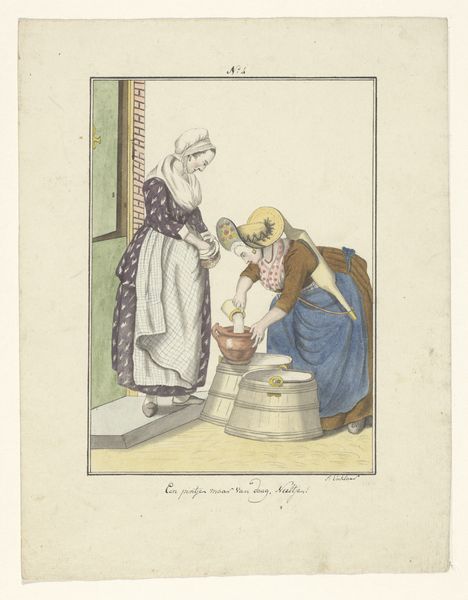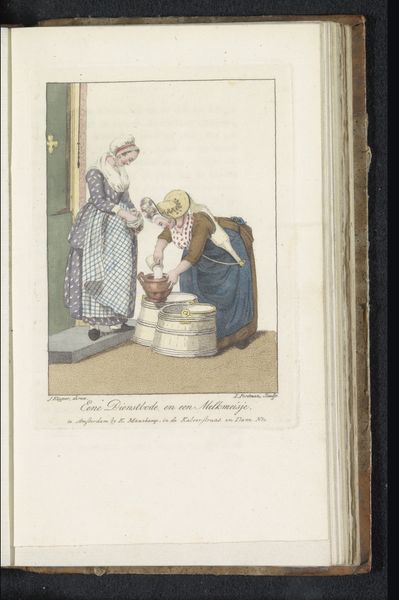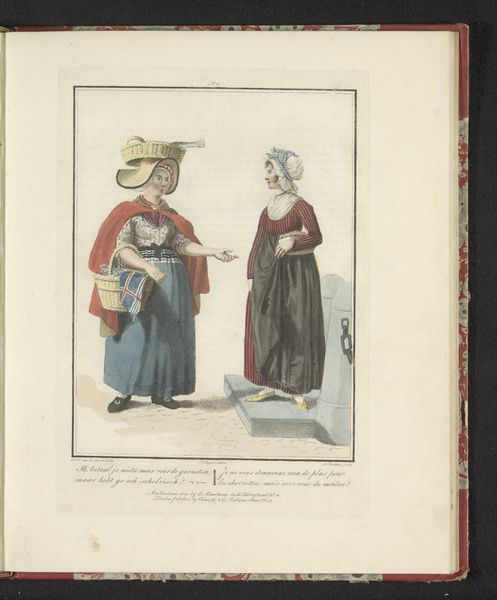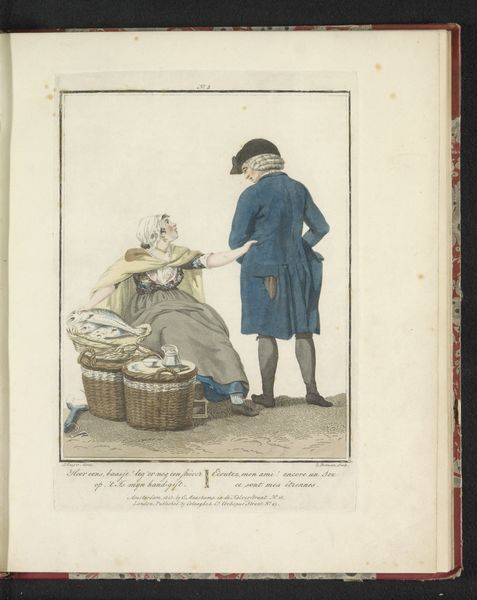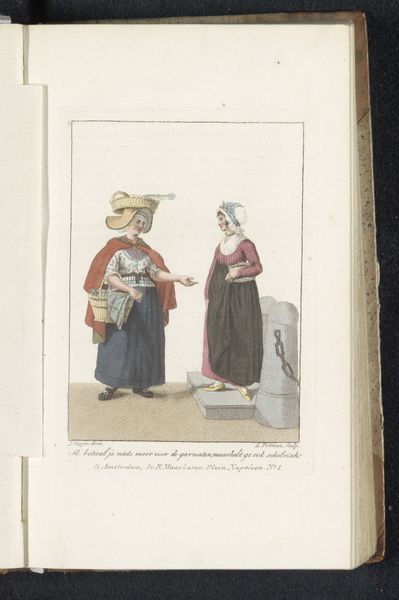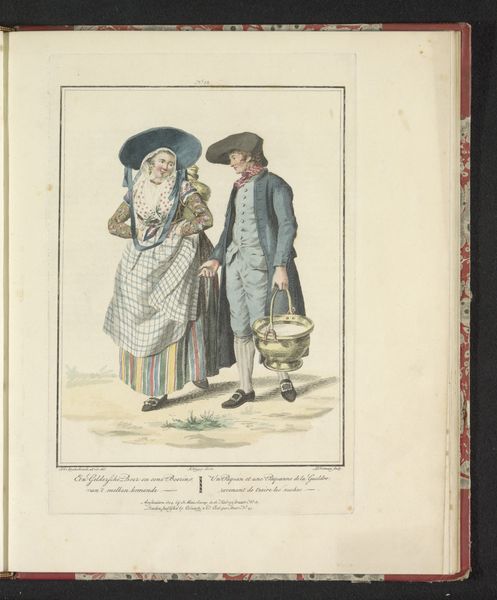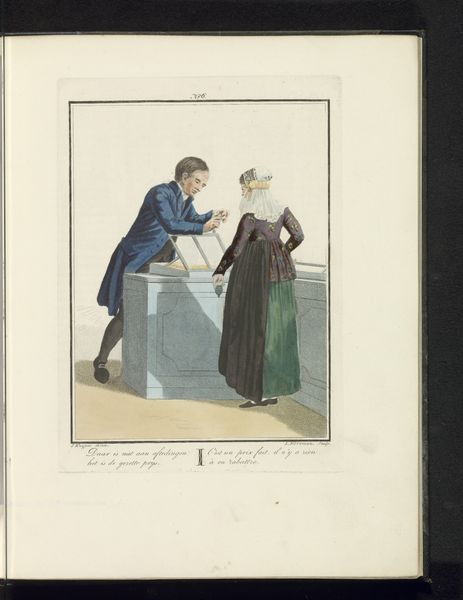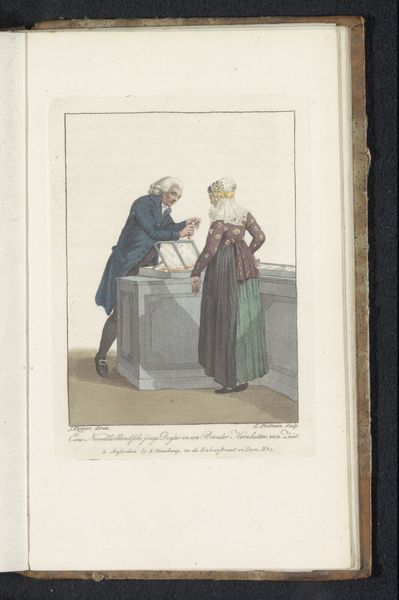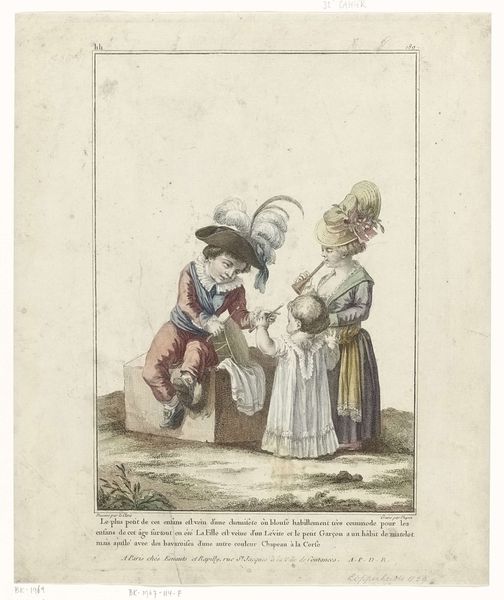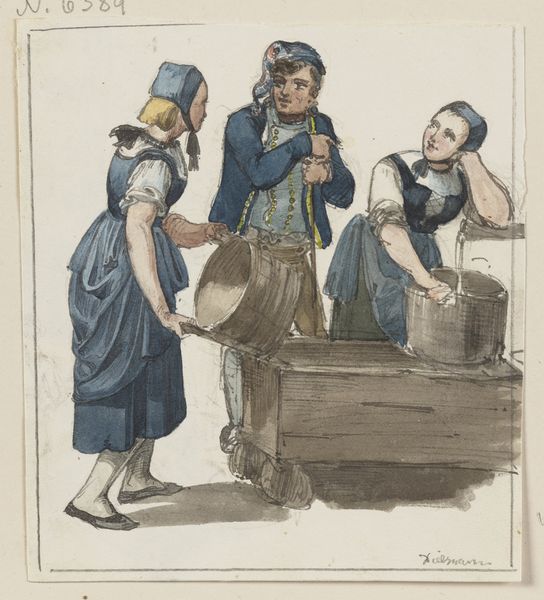
drawing, watercolor
#
portrait
#
drawing
#
watercolor
#
coloured pencil
#
romanticism
#
genre-painting
Dimensions: height 230 mm, width 156 mm
Copyright: Rijks Museum: Open Domain
Curator: Let's take a look at this intriguing watercolor from 1803 entitled, "Dienstmeisje en melkverkoopster", or "Maidservant and Milkmaid" by Ludwig Gottlieb Portman. It’s currently held at the Rijksmuseum. Editor: My first impression is one of quiet industry. It’s a remarkably detailed depiction of daily life, with delicate shading and precise lines. There's something serene about the ordinary tasks these women are performing. Curator: It’s interesting you say that, because at first glance, genre paintings like this one appear simply to capture everyday life. However, within this representation, we also see the economic structures that defined women’s roles in society during that era. These depictions reinforced particular societal norms. Editor: Absolutely. We see two women— presumably a milkmaid pouring her product while the other receives it. There's a clear class division suggested here, reflecting the hierarchies prevalent in Dutch society. The details in their attire, and their differing positions in relation to the activity, tells us about the labour and societal position that these women held. It also invites questions around their status and if their labor was valued appropriately, as milk was an everyday resource. Curator: Right. Romanticism was emerging as a movement in Europe during this time. And while this genre scene is small and modest, we might observe subtle hints of Romanticism, specifically in the artist’s sympathetic treatment of labor. Editor: Yes, but this “sympathetic” view might also romanticize the hardships faced by working-class women. While capturing their lives is important, it's also key to remember they are performing essential labour but the image is only available to the middle class and above. What kind of visibility are they getting in society versus the romanticization on paper? Curator: Precisely the nuance to consider. This detailed genre painting functions as both social document and an artwork rooted in particular ideological values. Editor: Indeed. This small watercolor offers a powerful snapshot of a specific time and asks us to look a bit further into the story to examine the social and gender dynamics.
Comments
No comments
Be the first to comment and join the conversation on the ultimate creative platform.

